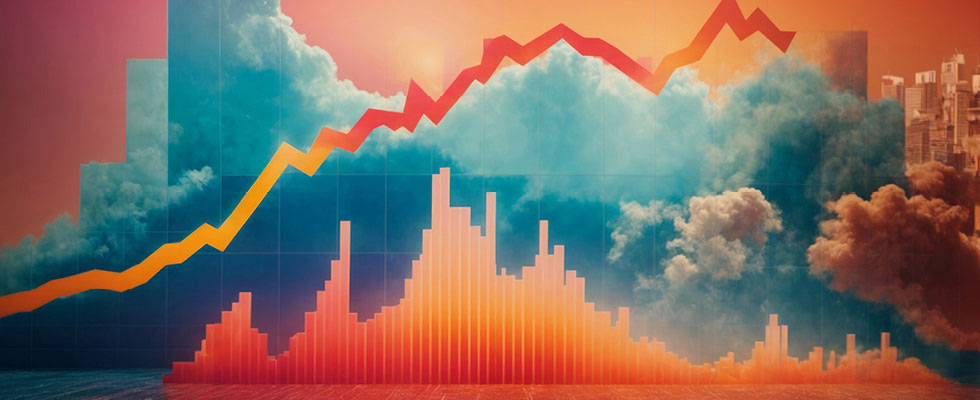
As you read this, you and your fellow propane marketers across the United States are likely in the middle of winter deliveries. You may be dealing with snow, ice or other seasonal issues including rain, sleet or wind. You name it, Old Man Winter can deliver it, making life challenging for everyone.
It’s no wonder that weather is always near the top of the list of factors that impact the state of the propane industry and the price you and your customers will pay each year. This year is no different. A big reason weather always ranks high on the list of important factors is, in large part, because it is so unpredictable. For winter 2023-2024, early predictions pointed to a warm season across the U.S. But as I write this, the Northeast is dealing with unseasonably cold weather. So, who really knows what the weather will bring in the coming months?
However, it’s not just the weather in the U.S. that impacts propane prices. Global weather patterns are a major factor, too. If it is particularly cold in parts of Europe or Asia, that could mean a significant increase in exports, driving prices higher. But if it’s warmer than normal across those regions, demand for exports could slow, dropping prices in the U.S. So far this year, Europe has been trending cooler than normal, and Asia has been a little warmer than normal. Only Old Man Winter truly knows for sure.
Exports are affected by more than global weather issues. They are also driven by factors like the Organization of the Petroleum Exporting Countries cutting — or increasing — European production or the status of margins in Asia for chemical feedstocks.
Exports are also currently being affected by a severe drought that has resulted in extremely low levels of water in the Panama Canal, reducing the number of ships able to pass through. Many ships have been forced to take the long way around Cape Horn to reach their destination. An additional factor is that, although new ships are in the process of being built, there has been a delay in their delivery, and several are headed to dry docks — all of which affect available capacity.
There are also several other factors influencing the price of propane:
- The status of natural gas and crude oil prices. Volatility of both in recent years has made it tough to predict the price of propane. Marketers should stay on top of the prices at Mont Belvieu, Texas, as both the price of crude and natural gas will affect propane prices.
- The amount of propane in storage across the U.S. and globally. Given the relatively mild winter last year, most marketers should have entered their peak winter delivery season with a more than adequate supply, especially if they planned ahead and had full storage and customer tanks. If they did not start with an adequate supply, the rest of winter could be tough. Large inventory storage caverns outside of the hubs are well supplied this year relative to the past few years, so there should be plenty of inventory in the field for most of the local markets.
- Supply disruptions. We enter every winter hoping for no disruptions, but we can never be sure when one might happen. If a critical pipeline goes down — which has happened more often than we’d like to remember — it can wreak havoc on marketers, their team and their customers for much of the season. It’s the same thing with rail cars and rail terminals. If a winter storm comes through, a labor strike happens or there’s a train derailment, it will affect local distribution.
- Distance for transporting your supply. Ideally a supply plan has included multiple supply points, with many located within a reasonable distance from a marketer’s operation. While it might be slightly more expensive to diversify supply points, having multiple supply points will help smooth out any supply issues, which always come up each winter.
- Your employee costs. If you’re like most marketers, in recent years you’ve had to budget for a significant increase in employee wages and benefits. Like most industries, the propane industry was impacted by the great resignation, so you are likely paying your team more this year than in years past, and your benefits have increased, too.
- Increases in technology costs. Is your website due for an upgrade? Does your current software platform allow customers to monitor tanks, order service or pay bills online? If not, in either case, you are likely due for a significant technology investment. To do an upgrade well, it will cost a pretty penny. Those costs will need to be incorporated into the cost of propane for your customers. You can’t take the financial hit without passing some costs along. And, don’t forget about the impact on customer communications related to either initiative — you’ll need to invest in that, too.
There are a number of other factors affecting the costs your customers will pay for propane over the coming year. Consider the cost of maintenance for your vehicles and equipment; the cost of insurance, which continues to rise every year; the cost to implement safety programs; and even your customers’ buying habits. Do you have more will-call customers than those on automatic delivery? If so, the costs of rearranging routes to accommodate last-minute will-call customers will play an important role in what you charge.
Hopefully, you are taking all these factors and more into account as you run your business. As a propane marketer, you must keep a constant eye on the ball. It would be great if we all could predict the future, but just as we don’t know what Old Man Winter has in store for us, we’re never quite sure what lies ahead. We must be prepared!


